I could’ve sworn that I reviewed the OPPO Reno3 Pro just last year. Yet here we are, with the OPPO Reno6 Pro. Has it been three generations already? A quick Google search revealed that OPPO puts one of these out every five months. Okay, I guess.
Let’s see what this latest iteration of Reno brings to the table.
OPPO Reno6 Pro Specifications
- 160 x 73.1 x 7.6 mm, 177g; Glass front (Gorilla Glass 5), glass back, metal frame
- 6.55″ AMOLED, 90Hz, HDR10+, 1080 x 2400 display, 20:9 aspect ratio, 402ppi
- MediaTek MT6893 Dimensity 1200 5G (6 nm): Octa-core (1×3.0 GHz Cortex-A78 & 3×2.6 GHz Cortex-A78 & 4×2.0 GHz Cortex-A55); Mali-G77 MC9
- 256GB storage, 12GB RAM
- Rear cameras: 64MP main, 8MP ultra wide, 2MP macro, 2MP mono
- Front camera: 32MP
- 4500mAh battery, 65W SuperVOOC 2.0 fast charging
- Misc: Under display fingerprint sensor, NFC, dual nano SIM, single bottom firing speaker
- Colours: Aurora, Stellar Black
Design & Build
The first thing I noticed about the Reno6 Pro when picking it up was the build quality of the device. Gone is the cheap plastic of the Reno3 Pro. The Reno6 Pro is comprised entirely of glass and metal. It feels decidedly premium in the hand, with its slim profile, sleek metal frame, and curved edges on the display glass. The back of the device has a unique matte texture which adds grip and a glittery shimmer under certain lighting conditions.
I cannot overstate how good the OPPO Reno6 Pro feels in the hand. I was under the impression that the Reno series was a midrange (or at most, upper-midrange) series of devices, in the same category as OnePlus’s Nord series or Xiaomi’s T series. But the Reno6 Pro doesn’t feel like a midrange device like those other phones. It feels like a flagship, almost reminiscent of those from Samsung or Huawei, or even OPPO’s own Find X3 Pro. Almost. The transition between display glass and metal rails isn’t as seamless. On my unit, the seam of the right edge can be felt more prominently than the one on the left. Overall though, it feels more like a flagship than not. In any case, it certainly feels more premium than my OnePlus 6T.
The device is also well-balanced. At 177g, the OPPO Reno6 Pro is certainly lighter than most of the competition in its class. The Xiaomi 11T which I recently reviewed for example, weighed a massive 203g. The relatively lightweight build, along with its slim profile, makes the Reno6 Pro a nice phone to handle.
Overall, I’m a fan of what OPPO has done with the premium design and build of the Reno6 Pro. It is a delight to hold and use, notwithstanding how tall it is.
Display & Speakers
OPPO has included a 6.55″ 90Hz 1080p AMOLED panel on the Reno6 Pro. That’s a fairly standard display spec for phones these days, and it’s a great display. It’s no 120Hz like some of the competition, but 90Hz is plenty smooth to me and a huge improvement from traditional 60Hz displays. As I’ve said in every other review, once you go high refresh rate, there’s no going back.
Colour reproduction is also good, with advanced settings for sRGB and P3 colour space. There is also support for HDR10+ for richer contrast and higher brightness for supported HDR videos on your favourite streaming platforms. The display takes up nearly the entire front of the phone, with minimal bezels all around and only a single hole punch camera cutout at the top left corner.
The curved edges on the display might be a point of contention. Previously regarded as premium, it seems that people now generally prefer flat displays for the advantages that they bring — fewer accidental touches, and no colour shifting or ambient light caught on their edges. I’m quite ambivalent about it, but can’t deny that it does give the Reno6 Pro a premium look with its consequently slimmer bezels.
Overall, fantastic display. No complaints here.
Where the Reno6 Pro falls short is in its speakers — or rather, speaker. Most phones these days, even budget ones, come with stereo speakers. So the fact that the Reno6 Pro only has a single bottom-firing speaker, at this price tag, is disappointing to say the least. The speaker is decent at low volumes and gets pretty loud, but you can expect some distortion at higher volumes. Ultimately, this speaker setup is acceptable at best. It gets the job done for watching YouTube or listening to podcasts, but don’t expect any more from it.
Performance & Battery
The OPPO Reno6 Pro comes with MediaTek’s Dimensity 1200 processor, a popular choice for upper-midrange devices over the past year. We’ve seen it previously in the OnePlus Nord2 and Xiaomi 11T which I recently reviewed. The gist is that it just underperforms the Snapdragon 865 found in last year’s flagships in CPU but outperforms in GPU. It’s perfectly suited for the upper-midrange segment, though I wouldn’t quite classify it as flagship-level.
In everyday use, the device is snappy and quick to open and switch between apps. This is thanks to the generous 12GB RAM and fast Dimensity 1200 processor. The 90Hz display also adds to the sense of speed. But how well does it perform under more intensive loads? Benchmark results follow.
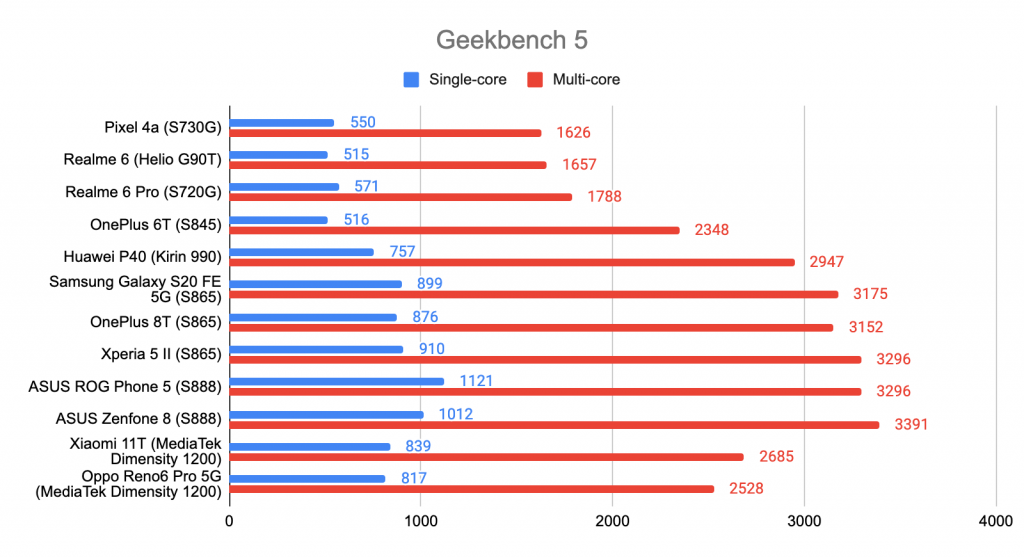

The OPPO Reno6 Pro performs as expected of a Dimensity 1200 device, except for one main flaw — it throttles under sustained load. During the Wild Life Stress Test, the OPPO Reno6 Pro started to throttle 9 minutes in. The throttling is much more significant compared to the similarly-powered Xiaomi 11T, and could be attributed to how thin the OPPO is. I suppose that’s the price of the slim profile which I praised earlier.
This means that you can expect some dips in performance when gaming after 10 mins or so for heavier games like Genshin Impact. That’s not ideal, and hence worth noting if you do a lot of gaming on your phone. If you don’t game however, performance is excellent.
Battery life with the 4500mAh battery is also excellent. I am consistently able to make it to the end of the day no problem with around 30% battery remaining. In fact, the device typically lasts me a day and a half, with screen on times of 6 hours or more, with plenty of YouTube watching and streaming on Spotify. Note that I wasn’t on a 5G network however, so you can expect standby times to be worse if you’re on 5G.
When the battery does eventually drain, you can top it off ridiculously quickly thanks to OPPO’s proprietary SuperVOOC 2.0 65W fast charging. Fast charging is a feature that I’ve come to appreciate since the 20W Dash Charge of my previous daily driver, the OnePlus 3. In the past year or so, the industry has hit 65W as a standard and is continually pushing this boundary further.
In my testing, the OPPO Reno6 Pro went from 17% to 60% in a mere 12 minutes. The only downside is that since OPPO’s charging tech is proprietary, you have to use the brick and cable included in the box to achieve these speeds. It also means that the provided charger will only fast charge OPPO devices (and other BBK subsidiaries like OnePlus, Vivo, and Realme), but not devices from the rest of the industry, which typically adopt the USB PD standard.
Cameras
The OPPO Reno6 Pro comes with 4 cameras: a 64MP main, 8MP ultrawide, 2MP macro, and 2MP mono. We shan’t speak of the last two cameras. I also find it rather disappointing that there is no telephoto like on the Reno3 Pro, though to be fair, the performance of that telephoto wasn’t great.
Images from the main sensor are binned to 16MP by default. In normal lighting conditions, the images look good with nice colours, plenty of detail, and contrast. Images from the ultrawide are softer, but that’s to be expected.
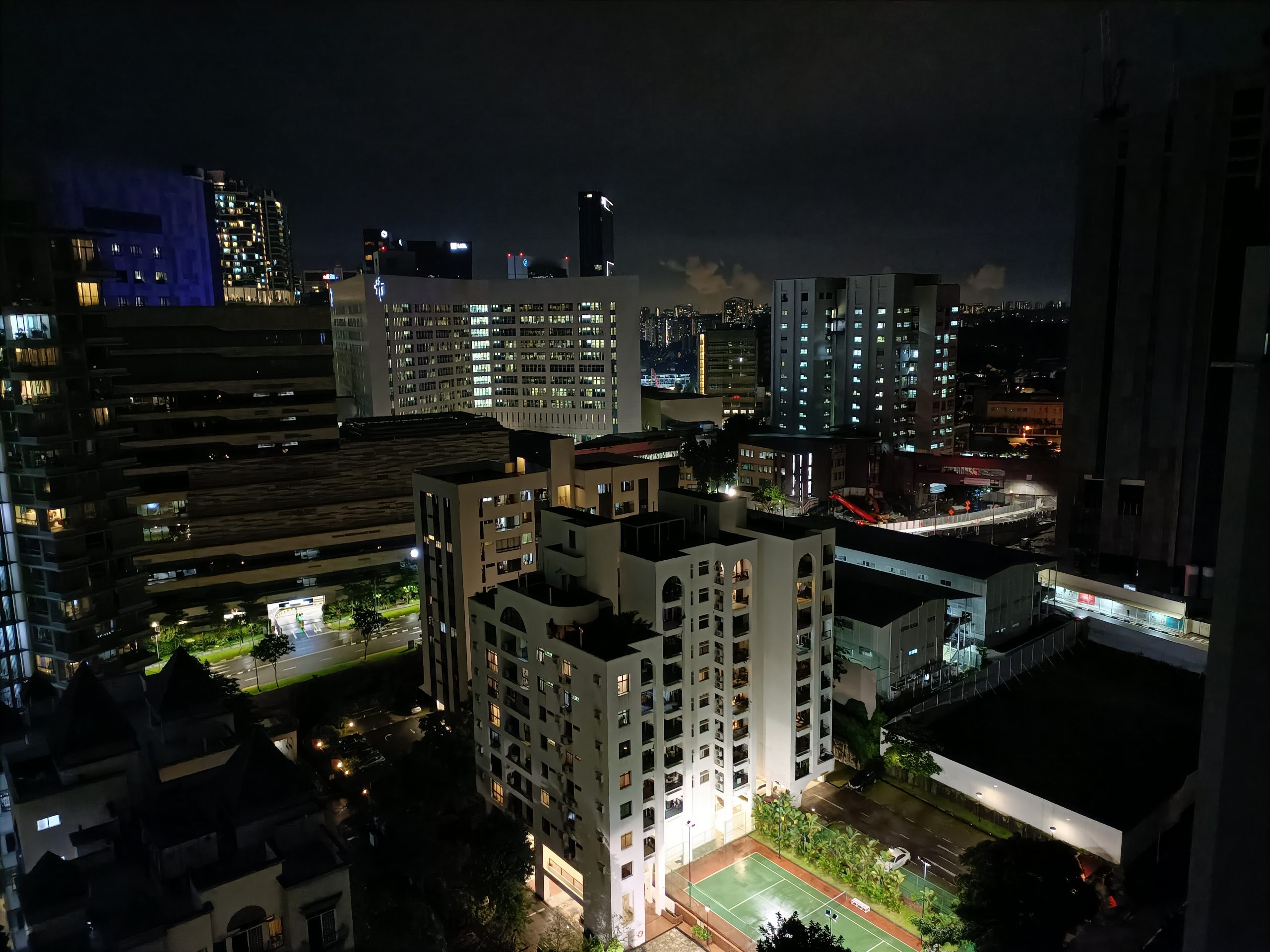
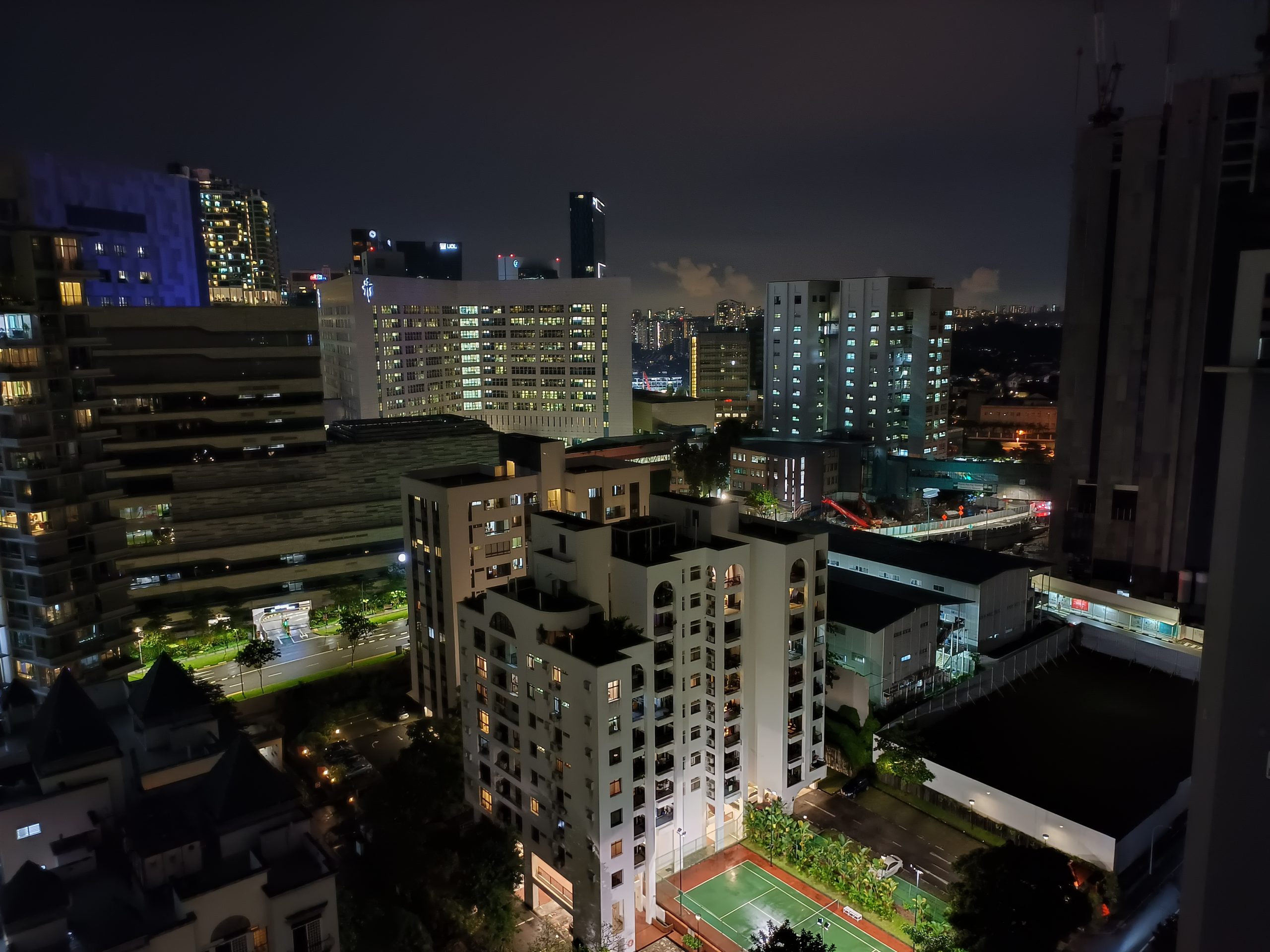
Night time performance however, isn’t fantastic. The dynamic range is poor. Highlights are blown out and there is quite a lot of noise in the shadows. Thankfully, the night mode fixes some of these issues and offers a far more usable shot.
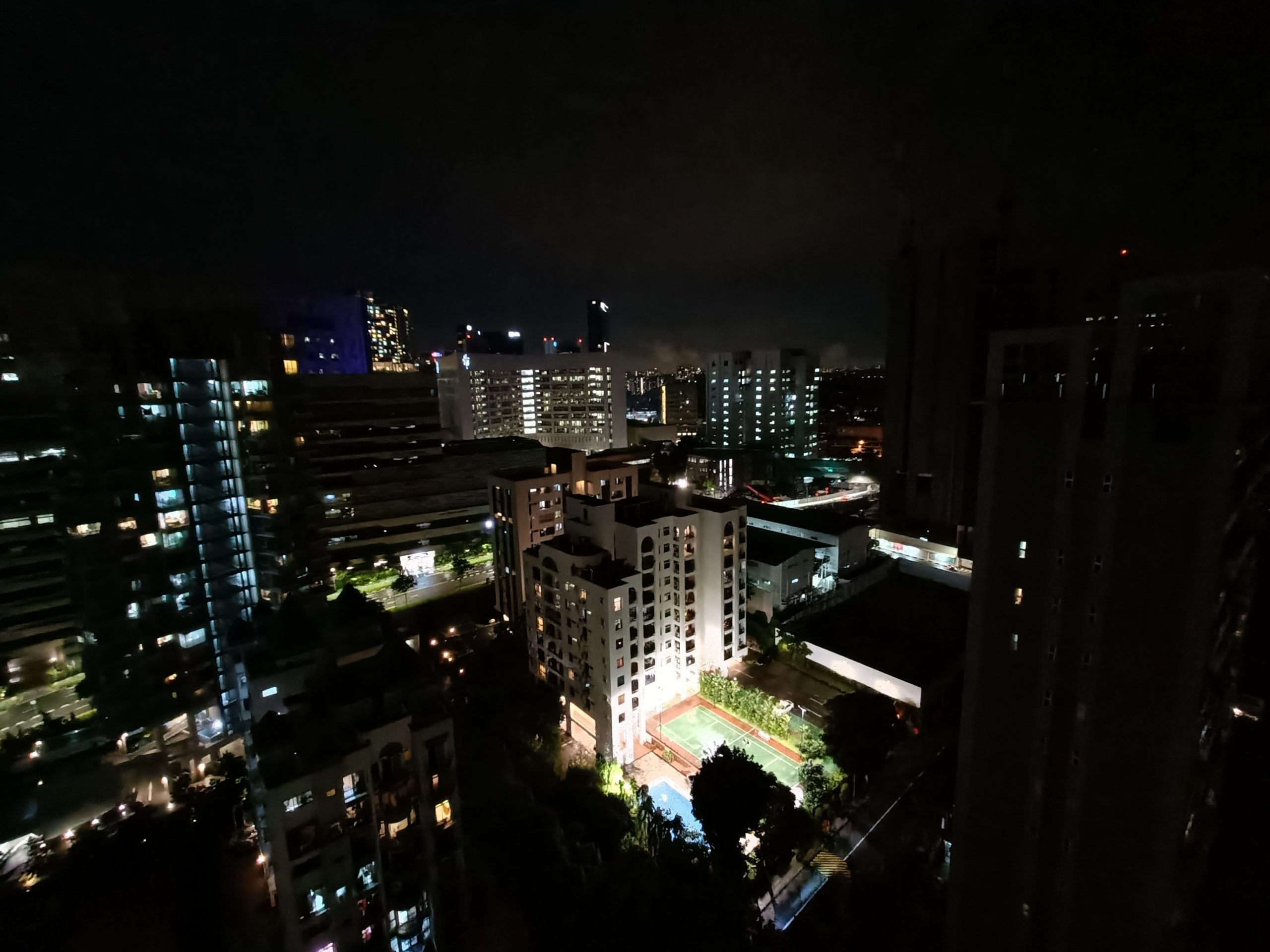
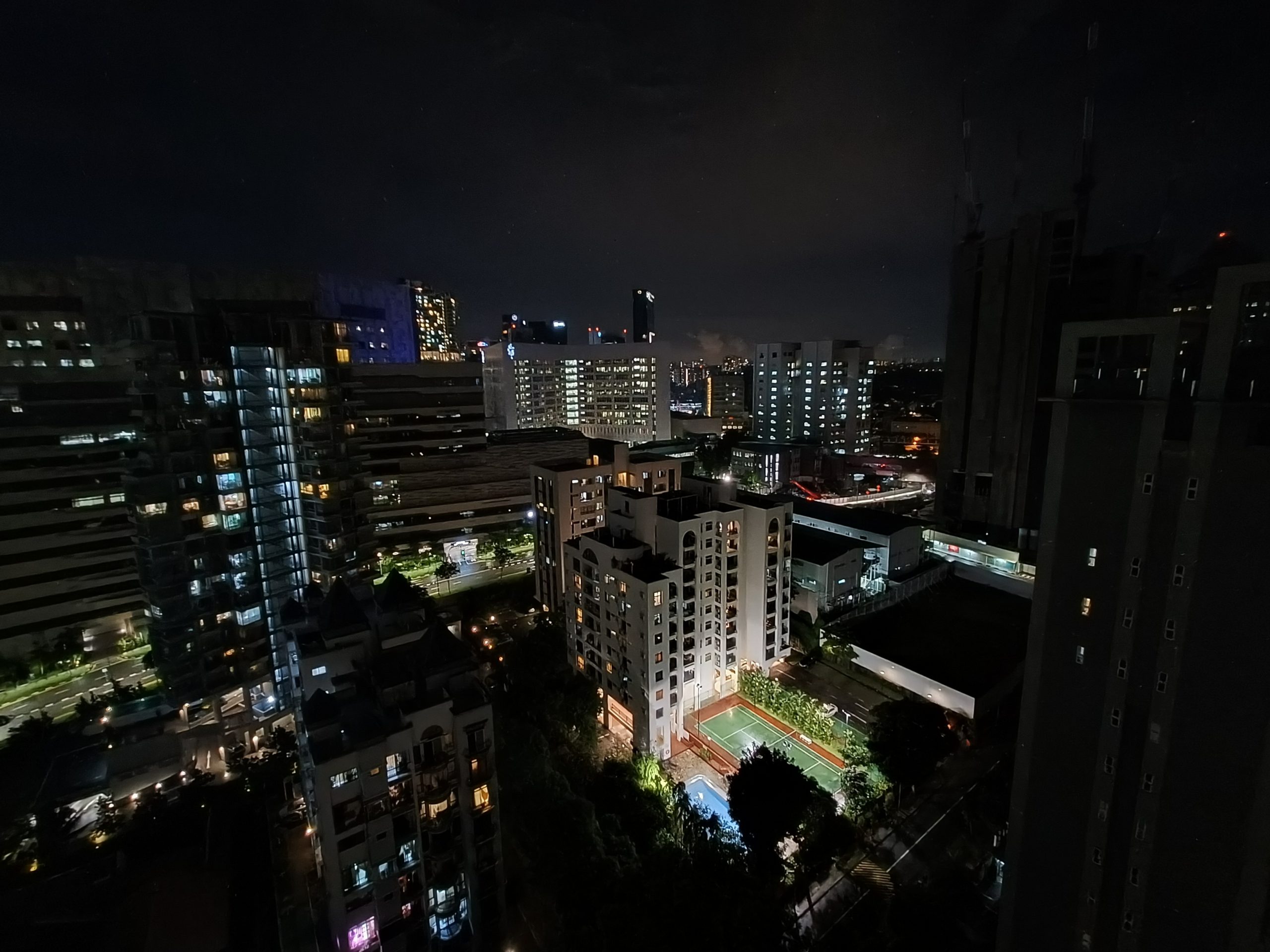
The ultrawide camera does significantly worse at night. The night mode helps to bring back some detail, but it’s still only barely usable.
Overall, decent set of cameras in daylight, underwhelming at night. For the price of the phone, I’d expect better.
Software
The OPPO Reno6 Pro ships with ColorOS 11 on top of Android 11. For the most part, it’s a clean-looking skin on top of Android, much less altered than say, MIUI. That being said, it’s not as clean as OnePlus’s OxygenOS. But now that OnePlus will be adopting ColorOS code moving forward, it looks like this is about as clean as it gets unless you get a Pixel from Google.
I did notice some annoyances with the software. For one, there were a lot of preinstalled apps. TikTok, Amazon, Prime Video, Agoda, booking.com, and LinkedIn, to name a few. Thankfully, these can all be uninstalled easily. Another issue that I noticed was having to dismiss notifications by swiping from left to right; the other direction will reveal some options instead, and you have to swipe again to dismiss. I couldn’t find anything in the settings to change this behaviour, but I guess it’s a matter of getting used to. I also noticed a bug in the app drawer where you wouldn’t be able to close the app drawer through a swipe down motion if you have been scrolling recently.
Other than those few minor complaints, there are some nice additions to OPPO’s software. Things like screen off gestures to turn on the flashlight is something that I use often on my OnePlus 6T, and I’m glad that it’s found on ColorOS as well. You can customise accent colours, shapes of your notification toggles, and load icon packs from the Play Store. There are also other software features for quick launching apps, though I did not use them.
Overall, the software has been stable and fluid. My bigger concern is with software support going forward. I initially wrote a long rant about my terrible experience with software support on OnePlus, and how the upcoming merger of OnePlus and OPPO software codebase gave me reasons for concern. But I decided to cut all that and keep it short.
OPPO says that it will provide 2 Android updates to the Reno series and 4 years of security updates. That simply isn’t good enough, especially not for this price, and especially not when the Reno6 Pro is launching with last year’s Android 11 when Android 12 is already out.
As per OPPO’s software update policy, the OPPO Reno6 Pro will only be updated up to next year’s Android 13. I have my doubts about how quickly that software update will arrive. But even if OPPO releases Android 13 on the Reno6 Pro the day Google releases it, the fact remains that your brand new Reno6 Pro will have outdated software less than two years from now when Google releases Android 14. That’s unacceptable for the price that you’re paying for this phone.
So let’s talk about price.
Pricing & Conclusion
Pros
- Excellent design and build
- Great display
- Good performance
- Great battery life, extremely quick charging
Cons
- Single bottom-firing speaker
- Performance throttles under sustained load
- Overpriced for its performance and camera offering
- Software support is questionable
- No official water and dust resistance
- Useless 2MP macro and depth cameras instead of a telephoto
- Fast charging only works with the provided charger
The official retail price for the OPPO Reno6 Pro is S$949 for 12GB RAM and 256GB storage. At the time of writing, it can be had at a discount for S$899. While that’s not as much as the ~S$1,300 to S$1,600 that the industry charges for flagships these days, it still isn’t cheap. And this is where my conflict with the Reno6 Pro lies.
For ~S$900, you could be getting the Google Pixel 6, which will be launching early next year in Singapore, and is expected to have a similar price tag. That device will have better cameras and performance than the Reno6 Pro, while having stereo speakers, wireless charging, an IP rating, three Android version upgrades, and five years of security updates. To reiterate, the Reno6 Pro will only be updated to Android 13, while the Pixel 6 will be updated to Android 15.
It is also worth noting that the level of performance and camera offered by the OPPO Reno6 Pro can be found on devices such as the OnePlus Nord2 and Xiaomi 11T for much less (~S$650 before discounts).
So it seems that the S$300 premium that you’re paying for the Reno6 Pro over those devices is simply for its build quality. It’s up to you to decide if that premium is worth it. I personally find it hard to justify, especially after considering the software situation — where the Reno6 Pro will have an outdated version of Android in less than two years from now.
Hence, while I enjoyed using the OPPO Reno6 Pro, I find it hard to recommend this phone. Ask yourself this — what is the price that you’re willing to pay for style?
As always, when purchasing online, check if you can get additional cashback on your purchase with ShopBack. You can also check out our deals page for more Singapore deals.
Liked this review? Follow us on Facebook, Twitter or Instagram for more updates!



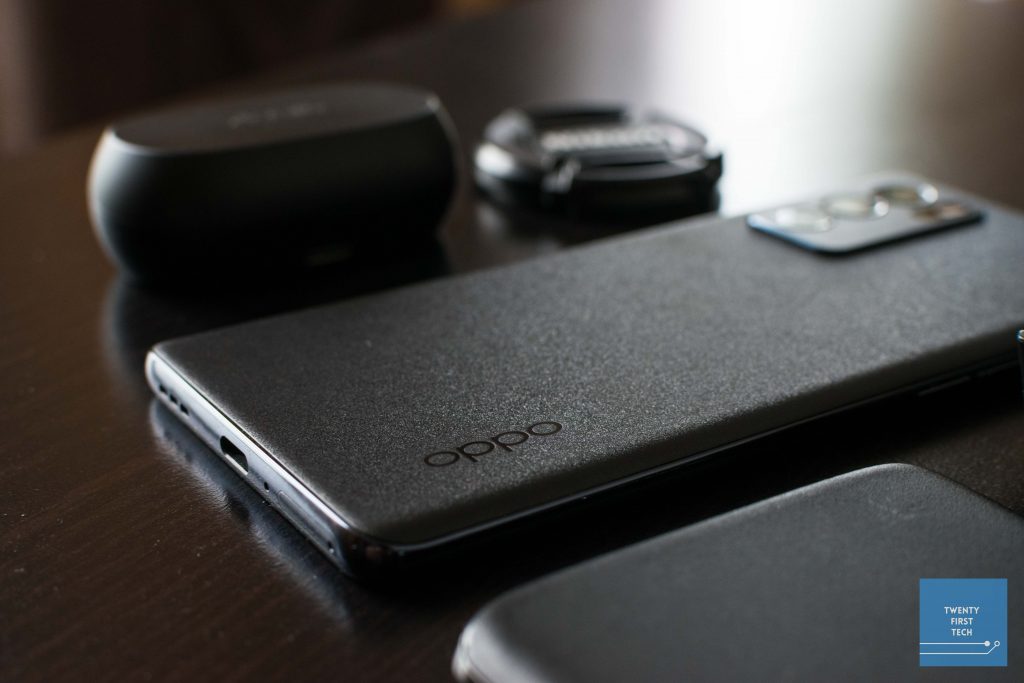
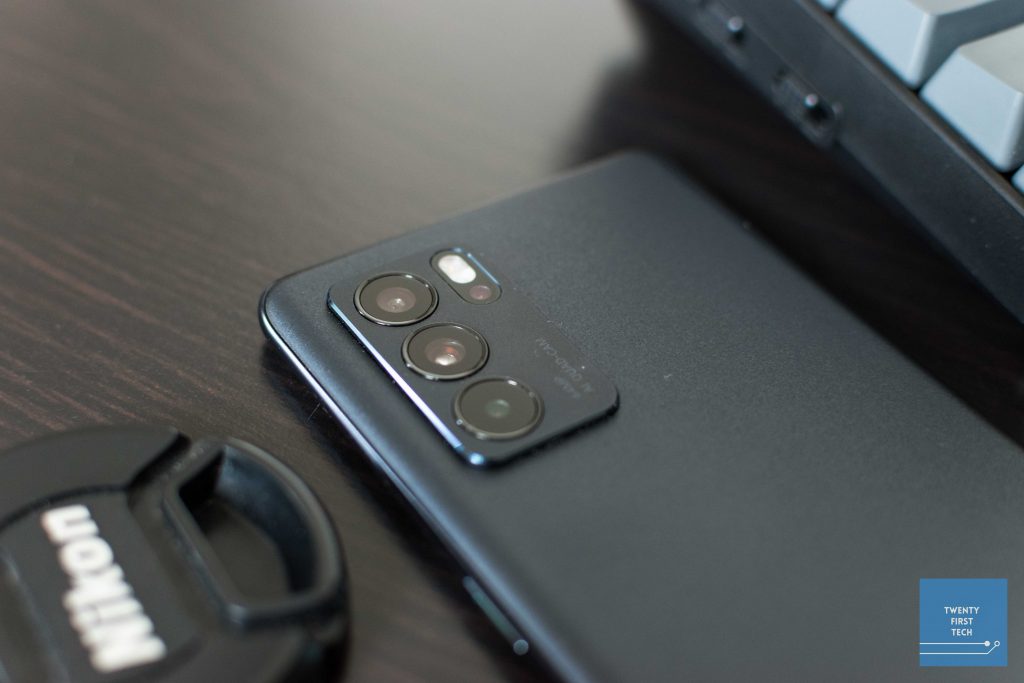
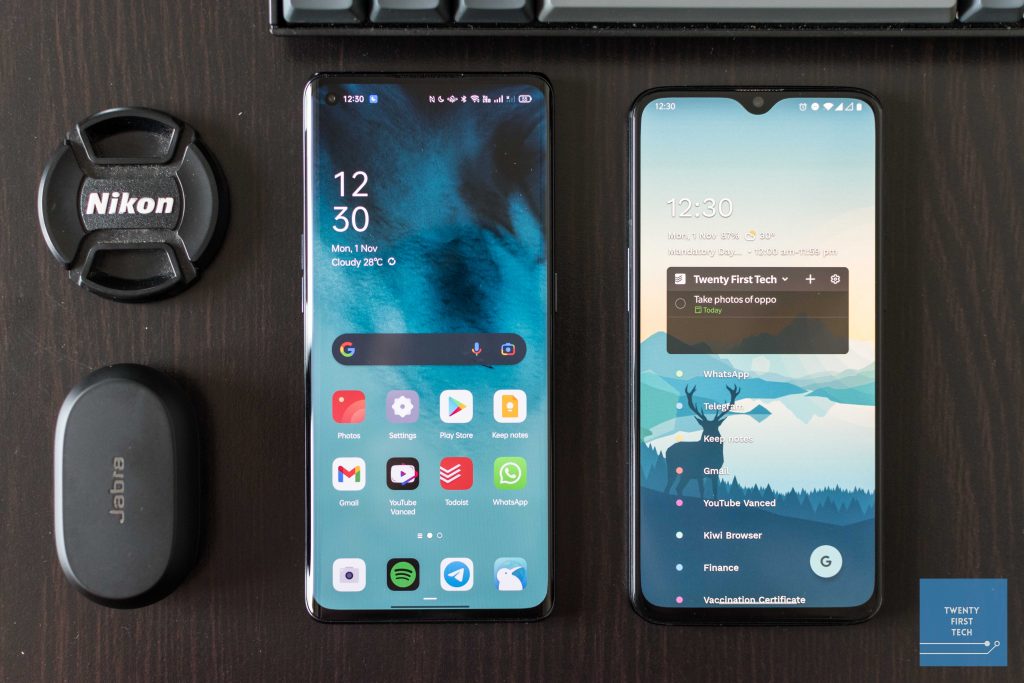
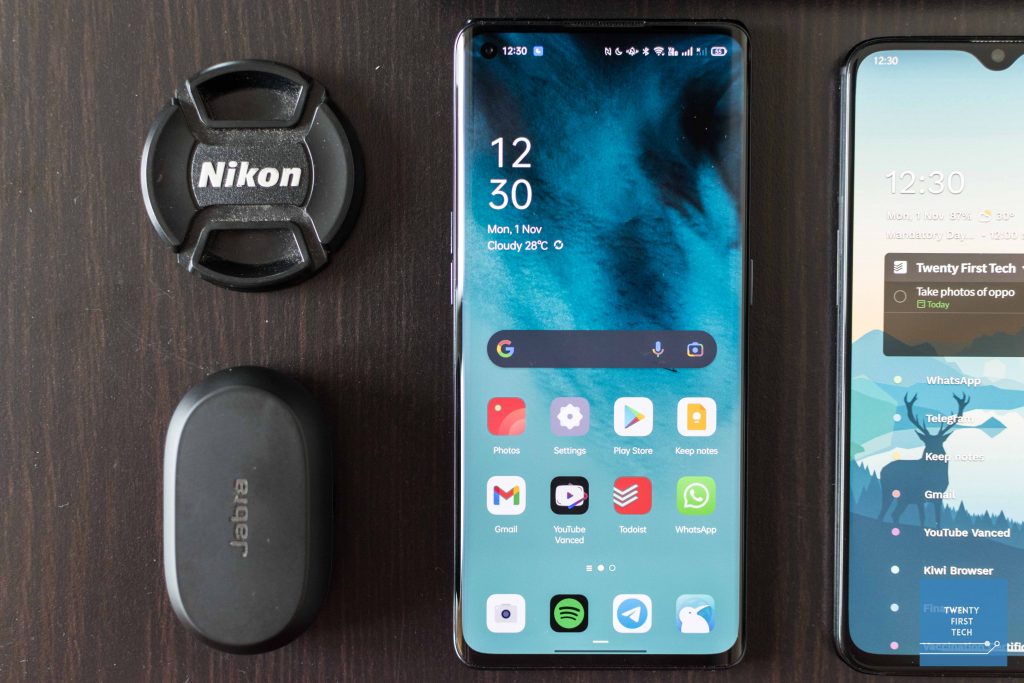
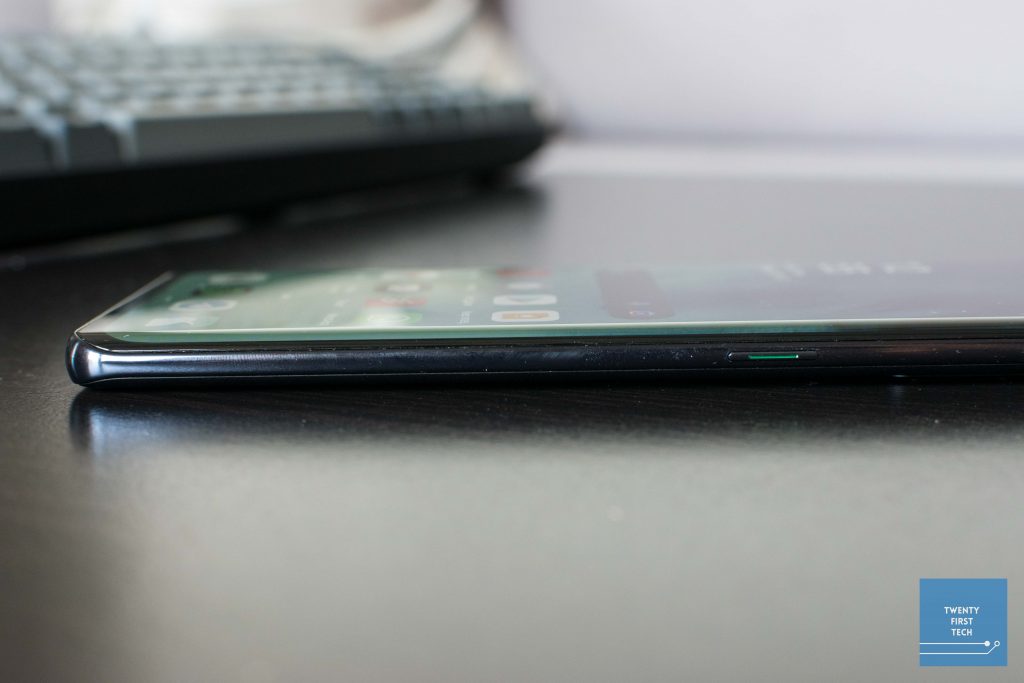

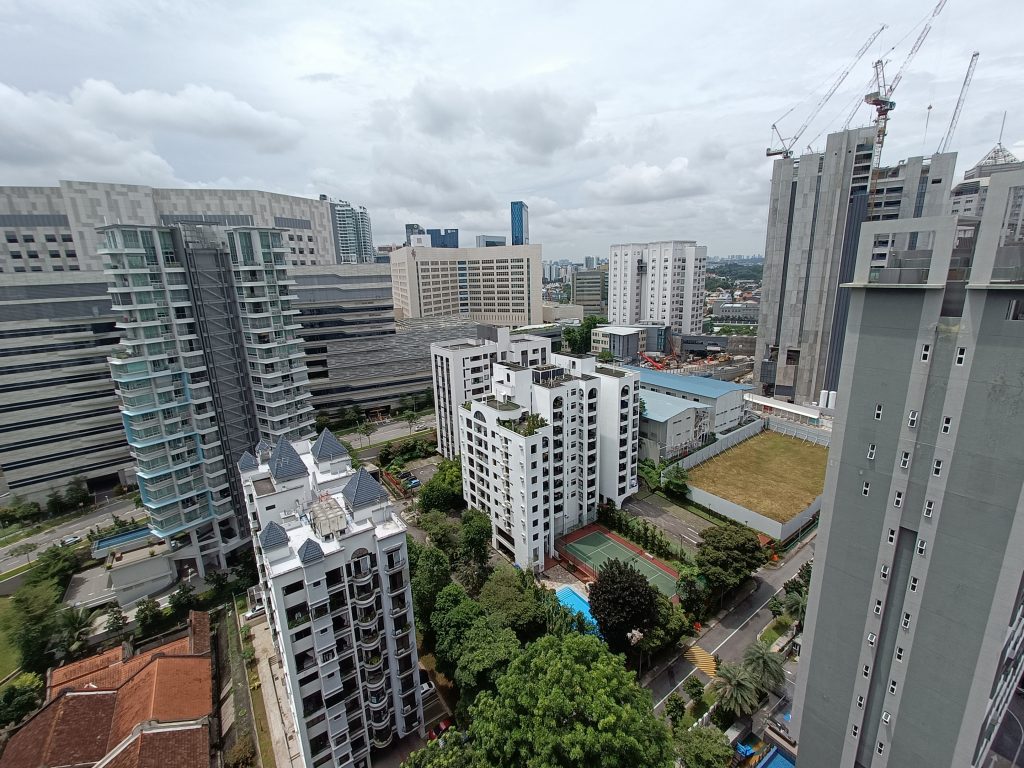



Great review! The OPPO Reno6 Pro 5G certainly seems to combine style with powerful features. I’m particularly impressed with the camera capabilities and the design. It’s nice to see a brand that values aesthetics without compromising on performance.
Great review! The design of the OPPO Reno6 Pro 5G really stands out, but I’m curious about how its camera performs in low-light conditions. Any insights on that?
Great review! The OPPO Reno6 Pro 5G’s design really stands out, and it’s exciting to see how it balances style with functionality. I’m curious about the camera performance in low light – did you feel it was up to par?
Great review! I love how you’ve highlighted the design and camera features of the OPPO Reno6 Pro 5G. It really looks like a stylish phone that doesn’t compromise on performance. Can’t wait to see how it performs in real-world usage!
Great review! I’ve been considering the OPPO Reno6 Pro 5G for its stylish design and camera features. Your insights on its performance and pricing really help in making a decision. Thanks for the detailed breakdown!
Great review! The design of the OPPO Reno6 Pro 5G really stands out, and it’s impressive how they balance style with performance. I’m particularly interested in the camera features you mentioned. Do you think it competes well with other flagship models?
Great review! The OPPO Reno6 Pro 5G definitely seems to strike a balance between style and performance. I’m particularly impressed by the camera capabilities and design. Can’t wait to see how it performs in real-world usage!
Great review! The OPPO Reno6 Pro 5G seems to strike a perfect balance between style and functionality. I’m particularly impressed by the camera features and the design. Can’t wait to see how it performs in real-world usage!
Great review! The design of the OPPO Reno6 Pro 5G really stands out, and it’s good to see that the performance holds up as well. I’m particularly intrigued by the camera features you mentioned. Do you think it competes well with other flagship phones in that price range?
Great review! The OPPO Reno6 Pro 5G seems like a fantastic blend of style and performance. I’m particularly impressed by the camera features. It’s always exciting to see how design can enhance functionality in smartphones!
Great review! The design of the OPPO Reno6 Pro 5G really stands out, and I appreciate the emphasis on how aesthetic appeal can influence consumer choices. I’m curious about the camera performance in low-light conditions—any insights on that?
Great review! I love how you highlighted both the design and camera features of the OPPO Reno6 Pro 5G. It really does seem to balance style and performance well. The price point is tempting too!
Great review! I’ve been considering the OPPO Reno6 Pro 5G after seeing its stunning design and camera capabilities. Your insights on battery life and performance really helped me weigh my options. Excited to see how it stacks up against other flagship models!
Great review! The OPPO Reno6 Pro 5G really does a fantastic job combining style with performance. I’m particularly impressed with the camera features and design. Definitely considering an upgrade after reading this!
Great review! I love how you highlighted the design aspects of the OPPO Reno6 Pro 5G. Definitely seems like a stylish phone that doesn’t compromise on performance. The camera features sound impressive too! Can’t wait to see how it stacks up against competitors.
Great review! The OPPO Reno6 Pro 5G really blends style with performance. The camera features sound impressive, and I love the design—definitely a phone that stands out! I’m curious about the battery life in real-world use. Thanks for the insights!
Great review! I love how the OPPO Reno6 Pro 5G balances style and performance. The design is stunning, and the camera features sound impressive. Can’t wait to see how it performs in real-world conditions!
Great review! The OPPO Reno6 Pro 5G definitely seems to strike a balance between style and performance. I’m particularly intrigued by the camera features. Thanks for sharing your insights!
Great review! The OPPO Reno6 Pro 5G truly seems to blend stylish design with impressive performance. I’m particularly interested in the camera features—would love to see some sample photos!
I’ve been eyeing the OPPO Reno6 Pro 5G for a while, and your review really helped me understand its features and performance! Love the emphasis on style, but I’m also curious about how well it holds up in day-to-day use. Thanks for the insights!
Really enjoyed reading this review! The design of the OPPO Reno6 Pro 5G looks stunning, and I appreciate the detailed analysis of its camera capabilities. It’s great to see a phone that balances style with performance. Can’t wait to see how it performs in real-life usage!